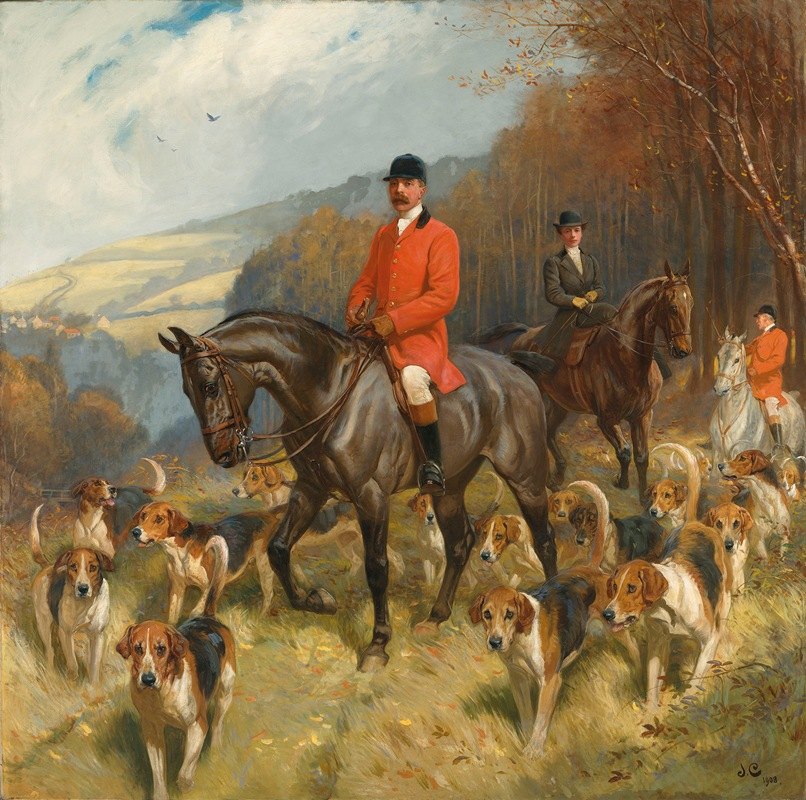Straddling the border between County Durham and Northumberland, the Braes of Derwent country was hunted by a number of other hunts from the mid-18th century. The Prudhoe and Derwent were one of these, as were The Castleside, whose huntsman Joseph Kirk is generally supposed to be the original upon whom Robert Smith Surtees’ fictional huntsman James Pigg was based.
This is the mother country of that famous hunting author RS Surtees, who lived at Hamsterley Hall. His fictional village of Handley Cross is supposed to be based upon Shotley Bridge, the village where the Braes of Derwent used to be kennelled.
The Braes of Derwent were officially founded in 1854 by the Cowen family, ancestors of Joe and Philip Cowen who have been at the helm of the Fernie in Leicestershire since 1972. Colonel Cowen introduced a bloodhound-cross to the pack during his mastership to increase the volume of cry in the big wooded valleys, but as coal mining increased, many of the older coverts disappeared and the bloodhound-bred hounds would dwell on the line and were hence gradually discarded. When Colonel Cowen died in 1895 the country remained unhunted for a season, the hounds were dispersed and it seemed like the hunt would cease to exist. It was following this interregnum that one of hunting’s most long-standing and distinguished masterships was born.

Lewis Priestman singlehandedly raised the Braes of Derwent from the grave and for 49 years was sole master. He hunted his own hounds from the outset, quickly earning a reputation for showing wonderful sport, before forging one of hunting’s most memorable partnerships when he put Alfred Littleworth on as his professional huntsman. The Littleworth family is steeped in hunting history. Alfred’s brother Charlie hunted the York and Ainsty and his sons, Charlie and Sidney, hunted the Quorn and the Atherstone respectively. Alfred’s daughter married Tom Bailey when he was kennelman at the Braes of Derwent and their son Sidney Bailey, the legendary huntsman of the Vale of White Horse (VWH), was born at Shotley Bridge. A mining magnate and colliery owner, Lewis was a coaching fanatic who personally drove the “Venture coach” which ran three times a week with a matching team of six horses between Shotley Bridge and Blanchland.
On taking the mastership, he built a new kennels on his own land at Tinkers Hill in Shotley Bridge. In 1943, when the old North Durham Hunt was dissolved, it was incorporated into the Braes of Derwent. In 1945, the Hunt became a “subscription pack.”
Charles Stirling, a former master of the Braes of Derwent, remembers his first season hunting the hounds in 1974 when they moved the hounds from Lewis Priestman’s old kennels to where they are today at Whittonstall.
“We rode out from the old kennels to go cubhunting with kennel-huntsman Denis Chapman, and then after a long morning hacked back to the new kennels at Whittonstall,” says Charles. “Tony Cowen had arranged the whole thing and while we were hunting they had removed the yard gates and erected them in the new kennels.”
